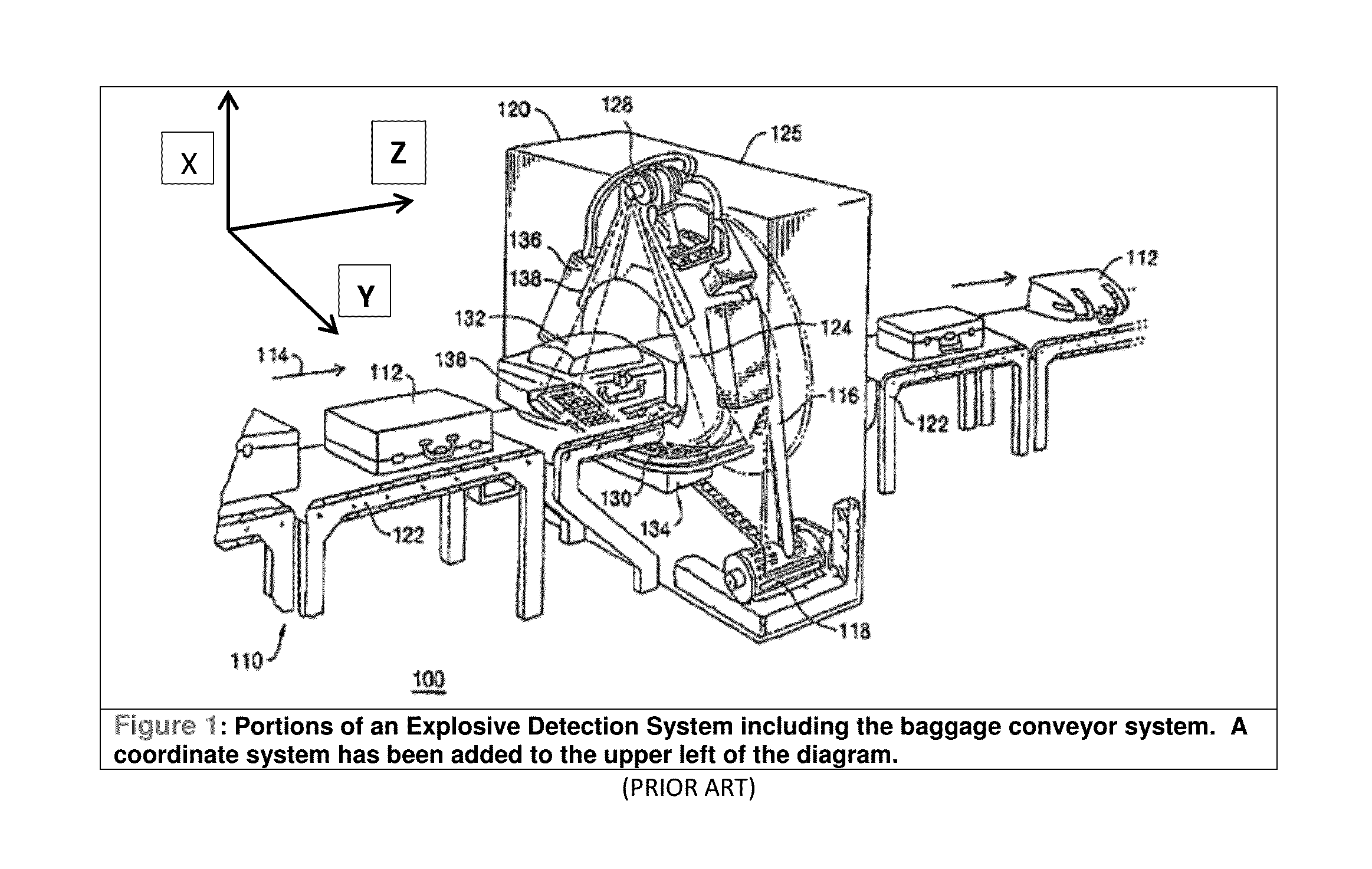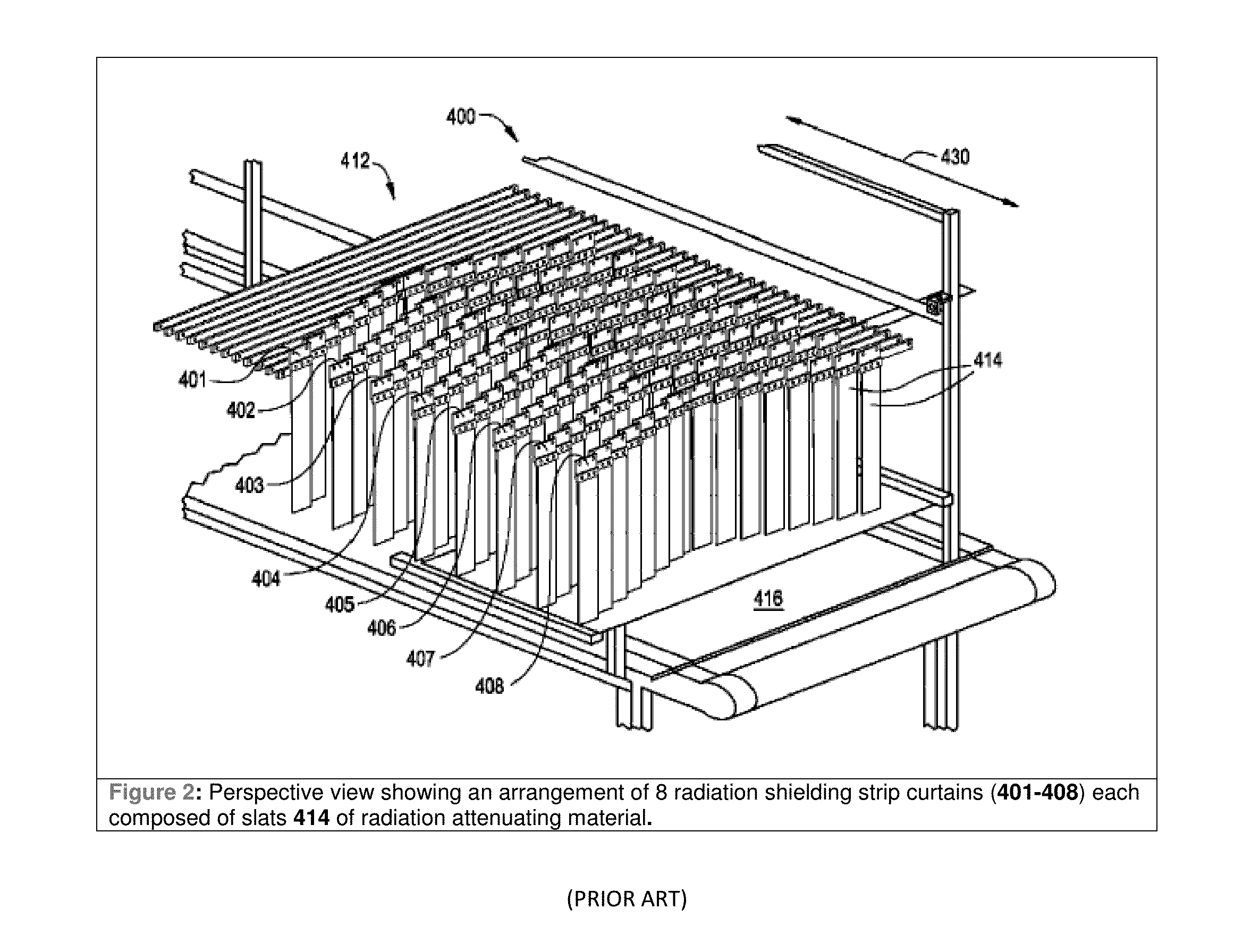Lead-free polymer-based composite materials
a polymer-based composite material, non-toxic technology, applied in the direction of nuclear engineering, nuclear elements, transportation and packaging, etc., can solve the problems of reduced casting ability, reduced or completely lost ability to cast materials, and toxic to animals, so as to improve arc resistance, dielectric strength, dielectric constant, dispersion factor and electrical resistivity, the effect of increasing the precision and accuracy of high-energy inspection systems
- Summary
- Abstract
- Description
- Claims
- Application Information
AI Technical Summary
Benefits of technology
Problems solved by technology
Method used
Image
Examples
example 12
[0171]A composite material having the following components is made (4210-d26) according to casting processes disclosed herein:[0172]21.75% Epon™ 8280 epoxy resin, available from Hexion[0173]3.25% MPDA curative, available from DuPont[0174]75.0% CIMBAR XF barium sulfate, available from Potters Industries Inc., Malvern, Pa., United States[0175]3 to 5 drops of anti-foaming agent
The composite material yields a density of 2.6 grams per cubic centimeter and absorbs or blocks 41.3% of X-ray radiation energy exposed to a 140 kVp X-ray radiation source. A pure lead material having an identical thickness absorbs or blocks 96.3% of X-ray radiation at 140 kVp X-ray radiation source.
The composite material has the following properties:[0176]95 D hardness[0177]0.4 ft-lb / in notched izod impact strength[0178]4190 psi tensile strength[0179]0.5% elongation[0180]9190 psi flexural strength[0181]1340 ksi flexural modulus[0182]7.1×10̂15 ohm-cm volume resistivity[0183]0.449 W / m k thermal conductivity[0184]5...
example 13
[0186]A lead & lead tetraoxide filled epoxy resin based composite material is made (4910-90D HD) by a liquid casting process. The composite material has a specific gravity of 4.29 and it is commercially available. The composite material has the following properties:[0187]95 D hardness[0188]0.46 ft-lb / in notched izod impact strength[0189]4500 psi tensile strength[0190]1.0% elongation[0191]9190 psi flexural strength[0192]1340 ksi flexural modulus[0193]10̂15 ohm-cm volume resistivity[0194]0.5567 W / m k thermal conductivity[0195]6.4 dielectric constant[0196]215 V / mil dielectric strength[0197]78 seconds arc resistance
This composite material absorbs or blocks approximately about 94.0% to about 96.0% X-ray radiation energy with a test sheet thickness of 0.25 inch when being tested at a 76 kVp X-ray radiation source.
example 14
[0198]A composite material having the following components is made (4210-d35, Lot#081009-01) according to casting processes disclosed herein:[0199]50.0% 1.57 micron tungsten powder, available as C6-649 from Buffalo Tungsten Inc., Depew, N.Y., United States.[0200]18.7% Epon™ 8280 epoxy resin, available from Hexion[0201]2.8% MPDA curative, available from DuPont[0202]27.5% 200 barium sulfate available from Potters Industries Inc.[0203]3 to 5 drops of anti-foaming agent
The composite material yields a density of 3.635 grams per cubic centimeter and absorbs or blocks approximately about 94.0% X-ray radiation energy, which has a similar radiation shielding performance as lead & lead tetraoxide filled composite materials in Example 13. When being tested for X-ray radiation shielding, both composite materials were identical in thickness (0.25 inch) and exposed to a 76 kVp X-ray radiation source. However, this composite material has 23 second arc resistance tested according to ASTM D-495 & UL...
PUM
| Property | Measurement | Unit |
|---|---|---|
| size | aaaaa | aaaaa |
| thickness | aaaaa | aaaaa |
| thickness | aaaaa | aaaaa |
Abstract
Description
Claims
Application Information
 Login to View More
Login to View More - R&D
- Intellectual Property
- Life Sciences
- Materials
- Tech Scout
- Unparalleled Data Quality
- Higher Quality Content
- 60% Fewer Hallucinations
Browse by: Latest US Patents, China's latest patents, Technical Efficacy Thesaurus, Application Domain, Technology Topic, Popular Technical Reports.
© 2025 PatSnap. All rights reserved.Legal|Privacy policy|Modern Slavery Act Transparency Statement|Sitemap|About US| Contact US: help@patsnap.com



